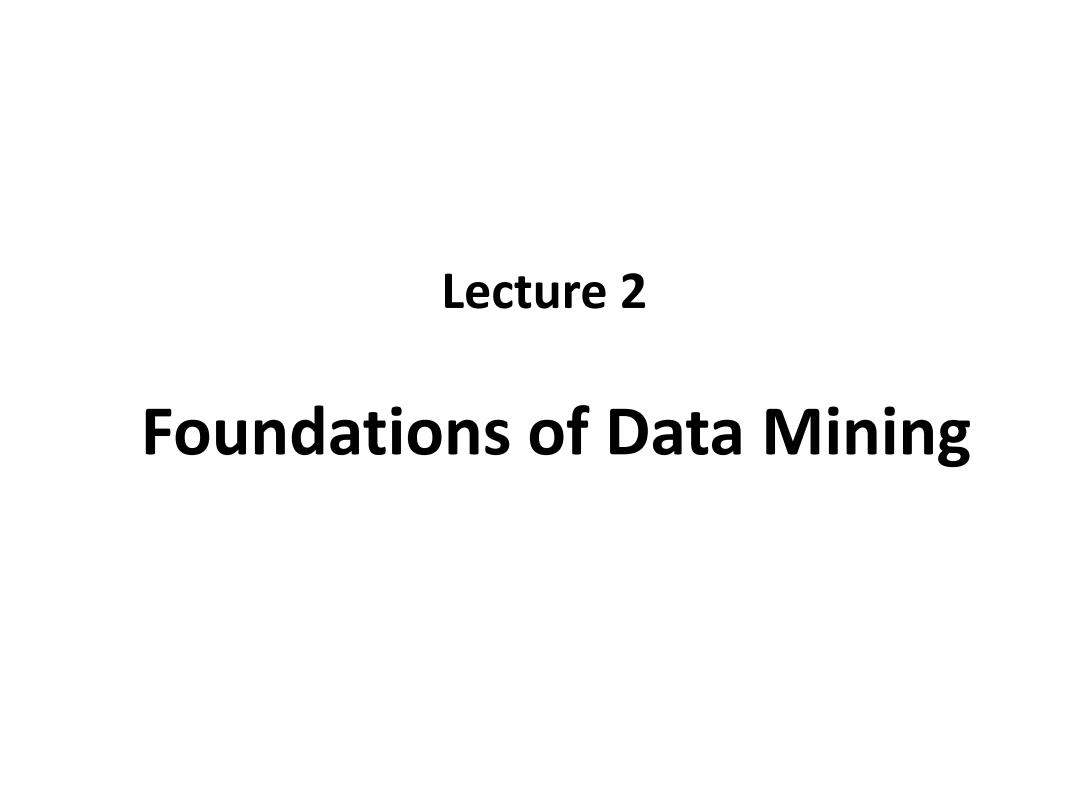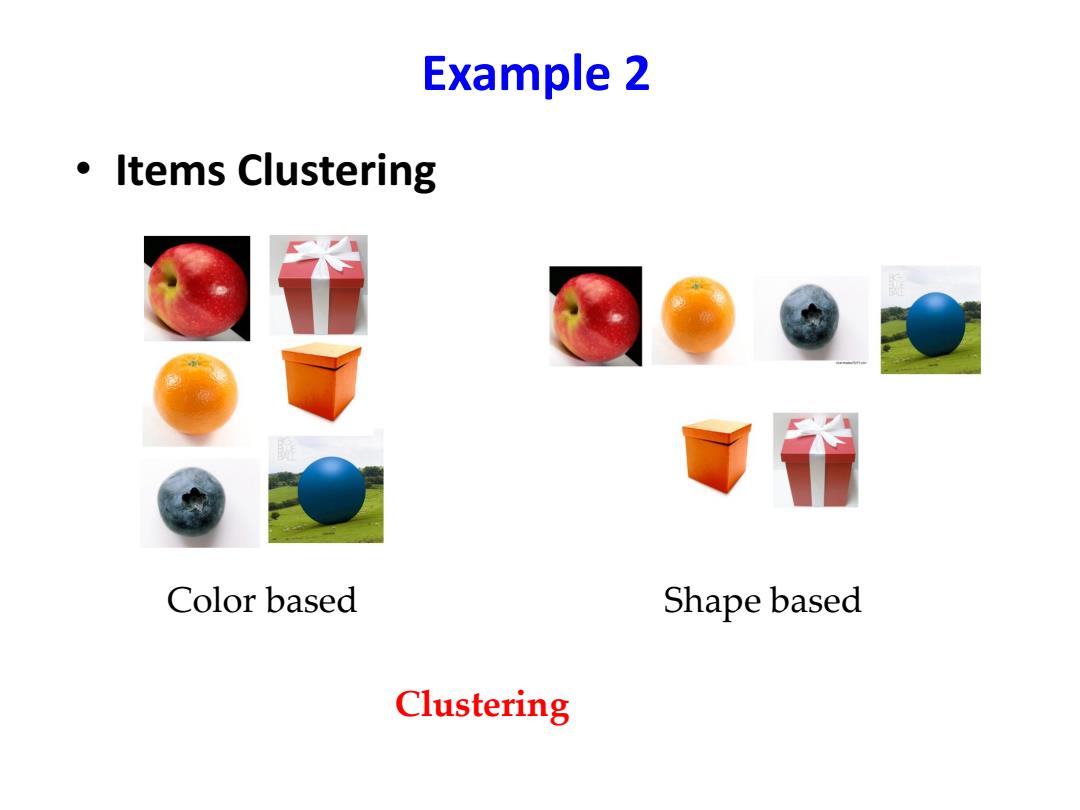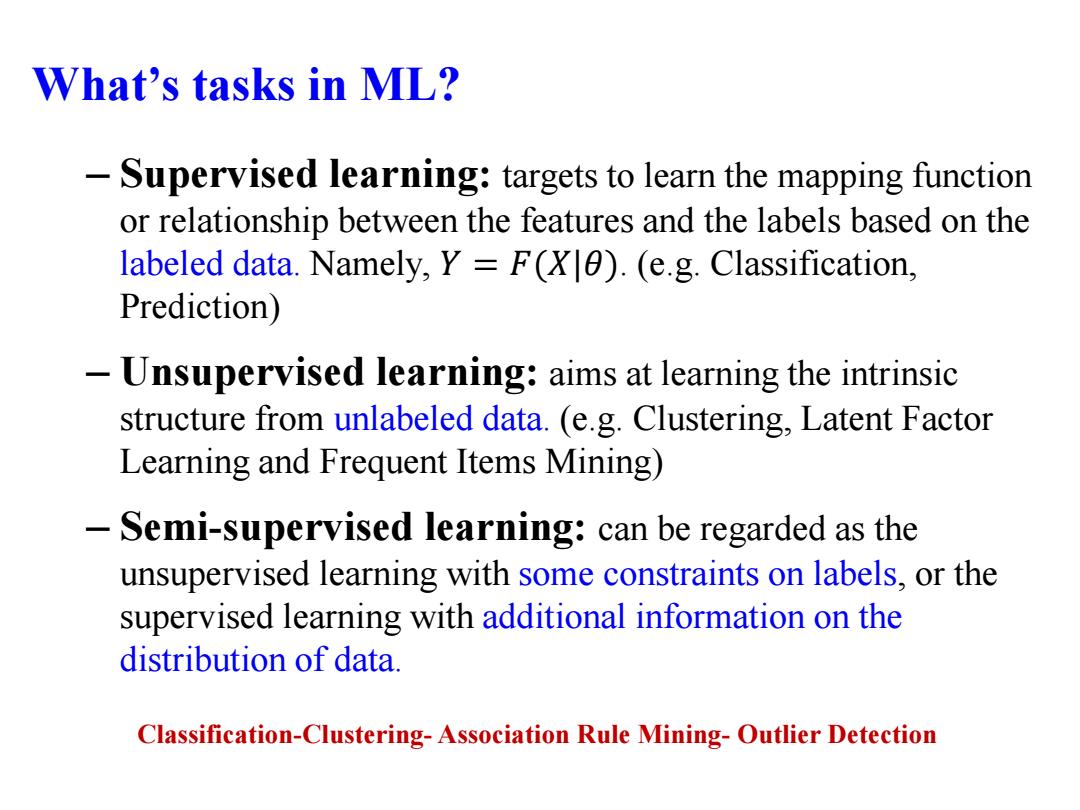
Lecture 2 Foundations of Data Mining
Lecture 2 Foundations of Data Mining

Example 1 Payment prediction Can we predict the salary of one man according to his age,education year and working hours per week? Age Edu.year HoursPerWeek Pay 25 7 40 <50k 38 9 50 ≥50k 28 12 40 ≥50k 24 10 40 <50k 55 4 10 ? Classification
Example 1 Age Edu. year HoursPerWeek Pay 25 7 40 <50k 38 9 50 ≥50k 28 12 40 ≥50k 24 10 40 <50k 55 4 10 ? • Payment prediction – Can we predict the salary of one man according to his age, education year and working hours per week? Classification

Example 2 。Items Clustering Color based Shape based Clustering
Example 2 • Items Clustering Color based Shape based Clustering

What's tasks in ML? -Supervised learning:targets to learn the mapping function or relationship between the features and the labels based on the labeled data.Namely,Y F(X).(e.g.Classification, Prediction) -Unsupervised learning:aims at learning the intrinsic structure from unlabeled data.(e.g.Clustering,Latent Factor Learning and Frequent Items Mining) -Semi-supervised learning:can be regarded as the unsupervised learning with some constraints on labels,or the supervised learning with additional information on the distribution of data. Classification-Clustering-Association Rule Mining-Outlier Detection
What’s tasks in ML? – Supervised learning: targets to learn the mapping function or relationship between the features and the labels based on the labeled data. Namely, 𝑌 = 𝐹(𝑋|𝜃). (e.g. Classification, Prediction) – Unsupervised learning: aims at learning the intrinsic structure from unlabeled data. (e.g. Clustering, Latent Factor Learning and Frequent Items Mining) – Semi-supervised learning: can be regarded as the unsupervised learning with some constraints on labels, or the supervised learning with additional information on the distribution of data. Classification-Clustering- Association Rule Mining- Outlier Detection

Supervised Learning Given training data ={(x1,y1),(x2,y2),..,(XN,yN)}where yi is the corresponding label of data xi,supervised learning learns the mapping function Y F(X|0),or the posterior distribution P(Y X). Dependent variable:PLAY ·Supervised problems Play Don't Play 5 -Classification OUTLOOK Regression sunny overcast rain Learn to Rank Play 2 Play Play 3 Tagging Don't Play 3 Don't Play 0 Don't Play 2 HUMIDITY WINDY <=70 >70 TRUE FALSE Play 2 Play 0 Play 0 Play 3 Don't Play 0 Don't Play 3 Don't Play 2 Don't Play 0
Given training data 𝑋 = x1, y1 , x2, y2 , … , xN, yN where 𝑦𝑖 is the corresponding label of data 𝑥𝑖 , supervised learning learns the mapping function 𝑌 = 𝐹(𝑋|𝜃), or the posterior distribution 𝑃 𝑌 𝑋 . • Supervised problems – Classification – Regression – Learn to Rank – Tagging – …… Supervised Learning